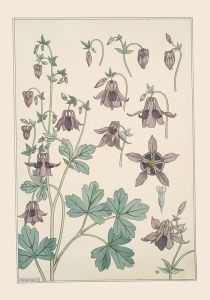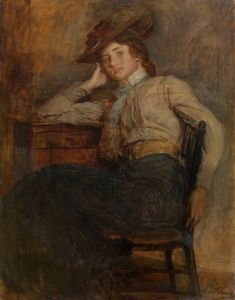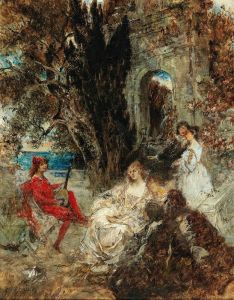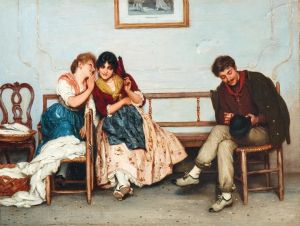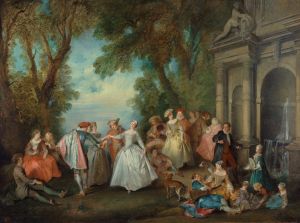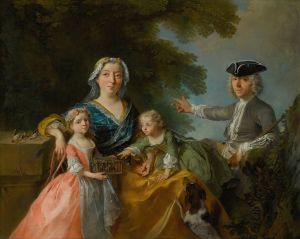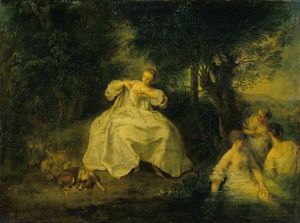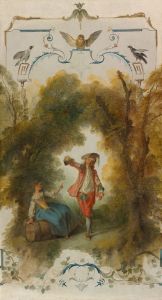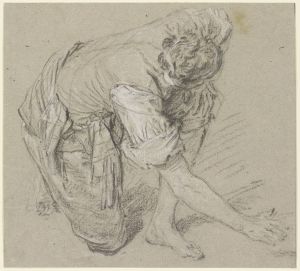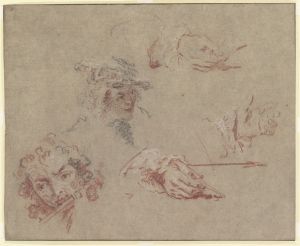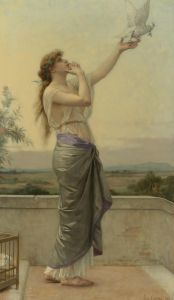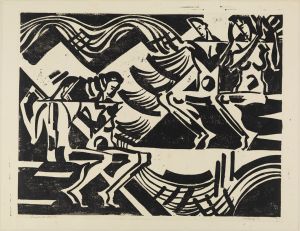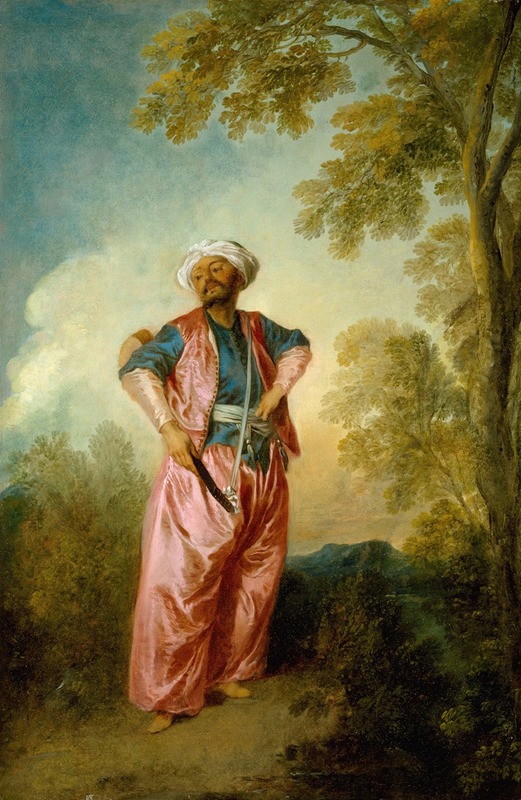
The Amorous Turk
A hand-painted replica of Nicolas Lancret’s masterpiece The Amorous Turk, meticulously crafted by professional artists to capture the true essence of the original. Each piece is created with museum-quality canvas and rare mineral pigments, carefully painted by experienced artists with delicate brushstrokes and rich, layered colors to perfectly recreate the texture of the original artwork. Unlike machine-printed reproductions, this hand-painted version brings the painting to life, infused with the artist’s emotions and skill in every stroke. Whether for personal collection or home decoration, it instantly elevates the artistic atmosphere of any space.
Nicolas Lancret was a prominent French painter known for his contributions to the Rococo style, which flourished in the early 18th century. His works often depicted scenes of leisure and romance, capturing the elegance and frivolity of the period. One of his notable paintings is "The Amorous Turk," which reflects the fascination with exoticism and the Orient that was prevalent in European art and culture during this time.
"The Amorous Turk" is a fine example of Lancret's ability to blend narrative with decorative elements. The painting showcases a scene that is both intimate and theatrical, characteristic of the Rococo's emphasis on playful and light-hearted themes. Lancret's work often drew inspiration from the theater and contemporary literature, and this painting is no exception, as it reflects the period's interest in stories set in distant lands, often imbued with romantic and adventurous undertones.
In "The Amorous Turk," Lancret employs a delicate color palette and intricate detailing to bring the scene to life. The composition is carefully balanced, with figures arranged in a way that guides the viewer's eye across the canvas. The use of soft, pastel colors and fluid brushstrokes is typical of Lancret's style, contributing to the painting's overall sense of elegance and charm.
The painting is part of a broader cultural phenomenon known as "Turquerie," which refers to the European imitation and fascination with Turkish art, architecture, and fashion. This trend was fueled by diplomatic exchanges and trade between Europe and the Ottoman Empire, leading to a romanticized and often inaccurate portrayal of Turkish life in European art. Lancret's work captures this fascination, presenting an idealized version of the Orient that appealed to the tastes and imaginations of his contemporaries.
Lancret's ability to capture the spirit of his time is evident in "The Amorous Turk." His attention to detail and skillful use of color and composition make the painting a quintessential example of Rococo art. The work not only reflects the artistic trends of the 18th century but also provides insight into the cultural exchanges and perceptions that shaped European art during this period.
While specific details about the narrative or characters depicted in "The Amorous Turk" may not be well-documented, the painting remains an important part of Lancret's oeuvre and the Rococo movement. It exemplifies the era's penchant for combining beauty with narrative, offering viewers a glimpse into the whimsical and imaginative world of 18th-century art. Through his work, Lancret continues to be celebrated as a master of capturing the elegance and playful spirit of his time.





